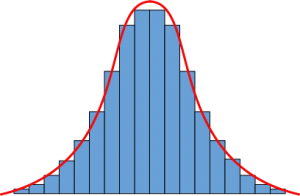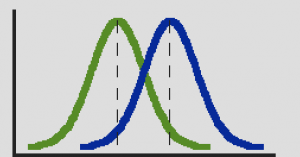If we start this blog post with the statement that “people differ from each other”, you will probably snort with derision thinking of snowflakes and popular cheesy quotes about being unique like everyone else, but it is true. People do differ and in so many ways. This week Elena and Kirstin tell us a bit more about what we mean by the term ‘individual differences’ in research.
The individual differences approach is based on the core idea that each of us has a unique combination of characteristics (some of which remain mostly stable, and some of which might change as things in our life change) and that people vary in this range of characteristics. Crucially, we can measure the amount of variation individuals demonstrate on many of these characteristics and this can be informative. It might help us understand and, importantly, predict people’s behaviours, for example, it may enable us to predict outcomes of an intervention or treatment in a more personalised way. Research on individual differences has provided a better understanding of many aspects of human variation (historically, a lot of work has been done to understand cognition and personality) and has also initiated the development of approaches to conceptualise and measure psychological constructs.
“…it may enable us to predict outcomes of an intervention or treatment in a more personalised way.”
Studying individual differences
The study of individual differences uses a dimensional approach, in the sense that it takes every person’s score into account rather than creating an average across different “groups” (as would be typical of experimental research for example). The various characteristics that differentiate individuals, whether that is height, personality traits or cognitive abilities are not seen as either/or situations, (i.e. you either are an introvert or not), but rather as continuums along which people may be positioned. The majority of individuals tend to score somewhere along the middle of a dimension, while fewer people are in the extremes. As such, traits typically form a bell-curve or “normal” distribution. The adoption of this dimensional approach to examine individual differences has allowed for the development of a wide range of different statistical methods to explore these characteristics beyond testing mean differences between groups. The most common examples of these are correlation and regression analyses.
Sometimes, the two approaches are combined. You may read research reports or articles where the term individual differences is used to mean “something that everyone has to different degrees, but is different between group x and group y”. For example, someone may be interested to see whether people with the highest levels of neuroticism scores perform differently during a fear conditioning task than those with the lowest levels of neuroticism scores. While neuroticism is a characteristic that varies, the focus in these analyses is really on average differences between groups. In this situation, it is more appropriate to use a statistical test that assesses whether mean performance between the two groups significantly differs (for example a t-test).
Both approaches can be useful depending on the question that you want to answer.
Individual differences in complex traits
It is particularly important to consider Individual differences when we are thinking about complex traits, i.e. traits that arise from a multitude of different factors, including biological (like genes) and environmental factors. Even if we are interested in mean differences between two groups that have probably been drawn from extreme ends of a normal distribution on some factor, these are probably influenced by different relationships between lots of other variables. The individual differences approach allows for the examination of all these different relationships. This is especially the case for biomedical studies combining multiple sources of data as found for example in biobanks. 
As research seeking to understand mental health problems increasingly involves the integration of multiple levels of information (see for example the RDoC initiative) on several thousand, or even millions of individuals (for example see the Million Veterans Program), the individual differences approach will become increasingly useful and important. It will help us to move towards a more nuanced understanding of the aetiology of psychopathology and with time a more personalised treatment approach.
External Links
Check out the British Society for the Psychology of Individual Differences
Or the Society for Personality and Social Psychology




